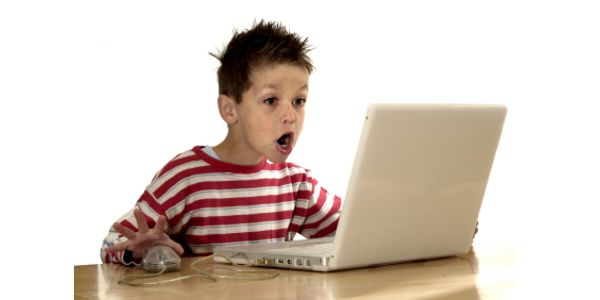As a 29-year law enforcement veteran with over seven year’s experience investigating unfortunate — and often preventable — incidents online, I have come to the conclusion that there are three key ingredients parents should keep in mind in order to help keep their kids safe and help them to become responsible digital citizens.
I recognize and promote the reality that it takes a village to keep children safe online, with important stakeholders ranging from family and schools to the community at large. Parents, however, are the foundational key for helping kids learn to navigate the online world safely. Here are a few ways.
INGREDIENT #1: GET IN THE KNOW ABOUT YOUR CHILD’S ONLINE ACTIVITIES
A key ingredient for Internet and social media safety is parental communication, participation and involvement in a child’s online activities across devices. In many cases I have witnessed over the years, parents were completely in the dark about what their child was doing on their computer and phone.
You can get brought up to speed about a child’s online activities by educating yourself about the platforms, tools and apps he or she uses. And who better to teach you than your own child? I know in my home, my son was the Jedi Master, and I was his Padwan. He was Yoda, and I was Luke Skywalker. Everything I learned about social networking, I learned from my son and other youth. I have found that youth love teaching their parents if given the opportunity to do so.
If, on the other hand, a child is unwilling or disinterested in showing you the digital ropes, you can always teach yourself — and it’s not as hard as you would think. For instance, free go-to resources on kids’ popular social platforms and apps include Safe, Smart & Social and Yoursphere.
Knowledge, and the understanding and application of that knowledge, is the ultimate power. As parents, we need to take the time to educate ourselves about our children’s constantly changing digital environment. We also need to consider the perspective of kids when determining what constitutes safe behavior online. No matter what, parents can and should play a key role in this endeavor.
INGREDIENT #2: FIND THE RIGHT BALANCE BETWEEN EFFECTIVE AND EXCESSIVE ONLINE SUPERVISION
Kids will be kids, and no matter how much parents prioritize communication, participation and involvement in their children’s digital lives, some will still engage in irresponsible online behaviour. If your child does participate in a concerning activity online, you should seize the teachable moments and explain to them how they can become a more responsible digital citizen.
One way you can determine if a child is engaging in problematic online behaviour is by monitoring their activity. Depending on the child’s age, this may be done by following their social profiles, having their messages routed to your smartphone, or even through online monitoring software. To be clear, I am not advocating for covert spying – when the child has no idea you are monitoring them. I do support, however, overt monitoring of a youth’s activity when online where you’ve informed your child that monitoring is taking place and their activities are subject to parental supervision.
In addition, monitoring should not be done in isolation of other forms of parental communication, participation and involvement. These ingredients are important and go hand in hand with creating a safe environment for your child online. With these ingredients in place, children have the opportunity to demonstrate they are behaving as good digital citizens. Importantly, youth should be able to earn privacy from their parents. Once they prove themselves, parents should remove monitoring software from devices while remaining engaged in their child’s digital life.
When it comes to monitoring software, I recommend the following for parents:
• Desktops and laptops: WebWatcher
• Mobile phones and tablets: Net Nanny (Android, Blackberry, Windows) and NetSanity (Apple iOS)
INGREDIENT #3: KEEP THE BEDROOM AN INTERNET-FREE SPACE
A majority of the unfortunate online incidents I have investigated over the years have taken place in the child’s bedroom where access to the Internet often went unsupervised by parents. In order to help children stay safe, I recommend keeping their bedroom an Internet-free space — that includes all digital devices, ranging from cell phones and tablets to gaming consoles. Instead, have them engage in online activity in open environments, such as the kitchen or family room so you can keep an eye on things. Once you are satisfied that your child has the necessary skills to behave as a responsible digital citizen, you can open up a dialogue about using the Internet unsupervised in their room.
There will come a point in time where parents need to step aside and grant kids autonomy and freedom when accessing the online world. Having said this, children first need to prove they have the skills and abilities to behave as reasonable and responsible digital citizens. Parents have the right to parent — and yes, that means kids are not always going to agree with our decisions. As always, our priority is keeping our children safe on and offline. We have the ingredients to help keep them safe.



